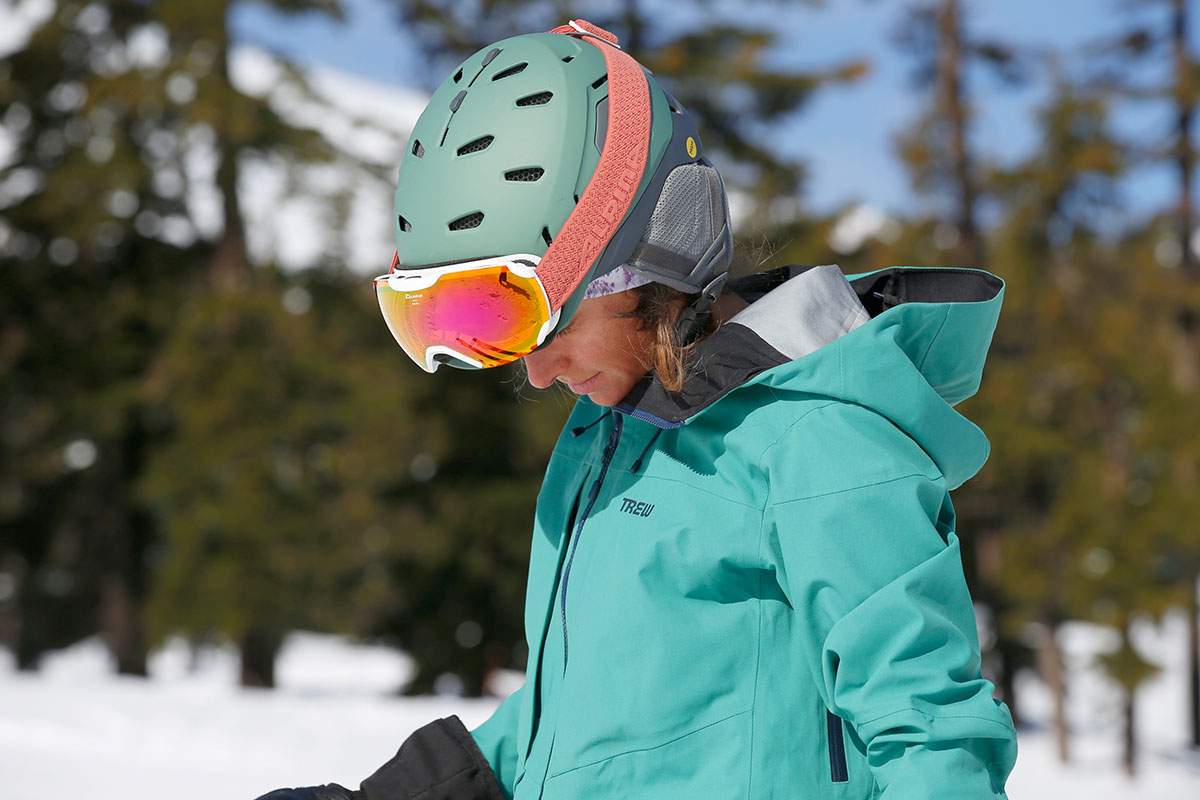
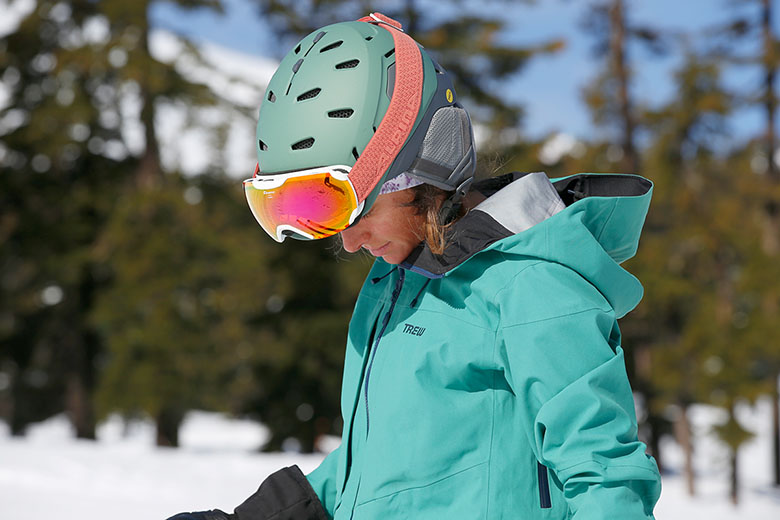
Switchback Travel (Jon Tapper)
Price: $325
Construction: Hybrid in-mold
Weight: 1 lb. 4 oz. (size medium)
Ventilation: Adjustable (24 vents)
What we like: Standout protection and comfort; all the features we look for in a premium lid.
What we don’t: Heavier and pricier than Smith’s Vantage MIPS without enough to show for it.
See the Smith Nexus MIPS
Smith’s snow helmet lineup runs the gamut from the simple and budget-friendly Holt to the range-topping Nexus tested here. This premium lid replaces the brand’s popular Quantum and is as feature-rich as they come: You get a full suite of safety tech including a MIPS liner and energy-absorbing Koroyd construction, a supremely comfortable and well-ventilated build, and a highly adjustable fit system. The Nexus is undeniably pricey at $325, but we consider it the full package for committed riders—whether you’re tackling big lines in the backcountry or racking up days at the resort. Below we break down our experiences with the Nexus MIPS. To see how it stacks up to the competition, see our articles on the best ski helmets and best snowboard helmets.
Smith helmets consistently impress us with their well-padded and comfortable designs, and the Nexus MIPS is no exception. For starters, the interior is a mix of ventilated mesh and plush lining—focused along the forehead, top, and back of the skull—that’s soft against the head and nicely cushioned. The chinstrap is made of the same padding to minimize chafing and irritation, and the ear pads are even thicker for additional protection and warmth (bonus: They’re removable to shave weight or increase airflow on warm days). Additionally, the helmet’s low-profile feel and above-average breathability make it easy to wear all day whether you’re lapping the resort or earning your turns in the backcountry. And finally, the Nexus comes equipped with a premium Boa adjustment system, which allows for a snug, highly customizable fit (more on this in “Key Features” below). It’s true that the Nexus is pricier than most competitors at $325, but the levels of comfort and plushness do help justify the cost.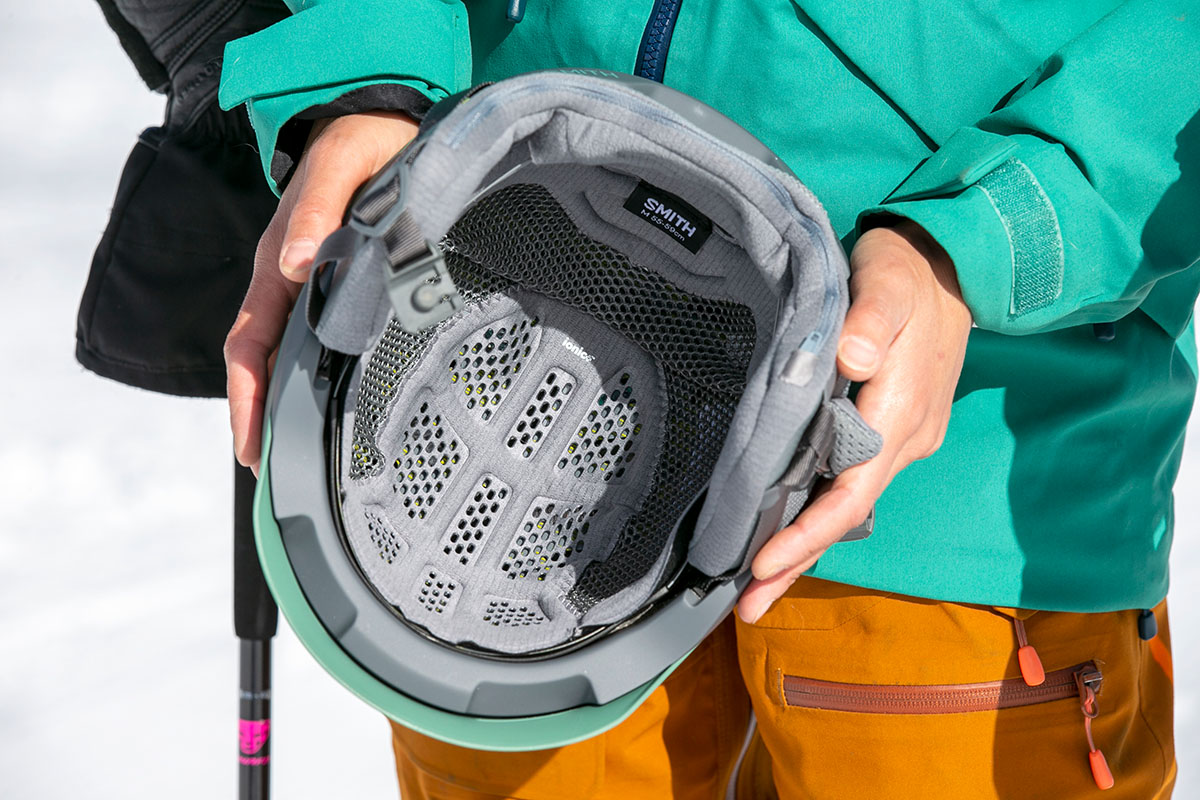
In addition to comfort, ventilation is another clear strong suit of the Nexus MIPS. With 24 well-placed vents—18 of which are adjustable via dual sliders at the top—the Nexus promotes generous airflow, even on warm days or when I’m working up a sweat. Importantly, the openings are easy to toggle, even with gloves on, with two separate sliders that independently control the front and rear vents (settings include open, partially open, or closed). Finally, the two vents above the brim do a nice job of moving warm air away from my ski goggles to minimize fogging. All in all, I have no complaints about the Nexus’ ventilation and consider it plenty breathable for touring (although I typically take it off on climbs longer than 30 minutes or so). And if you’re really working up a sweat, it’s easy to remove the ear pads and top liner for maximum airflow.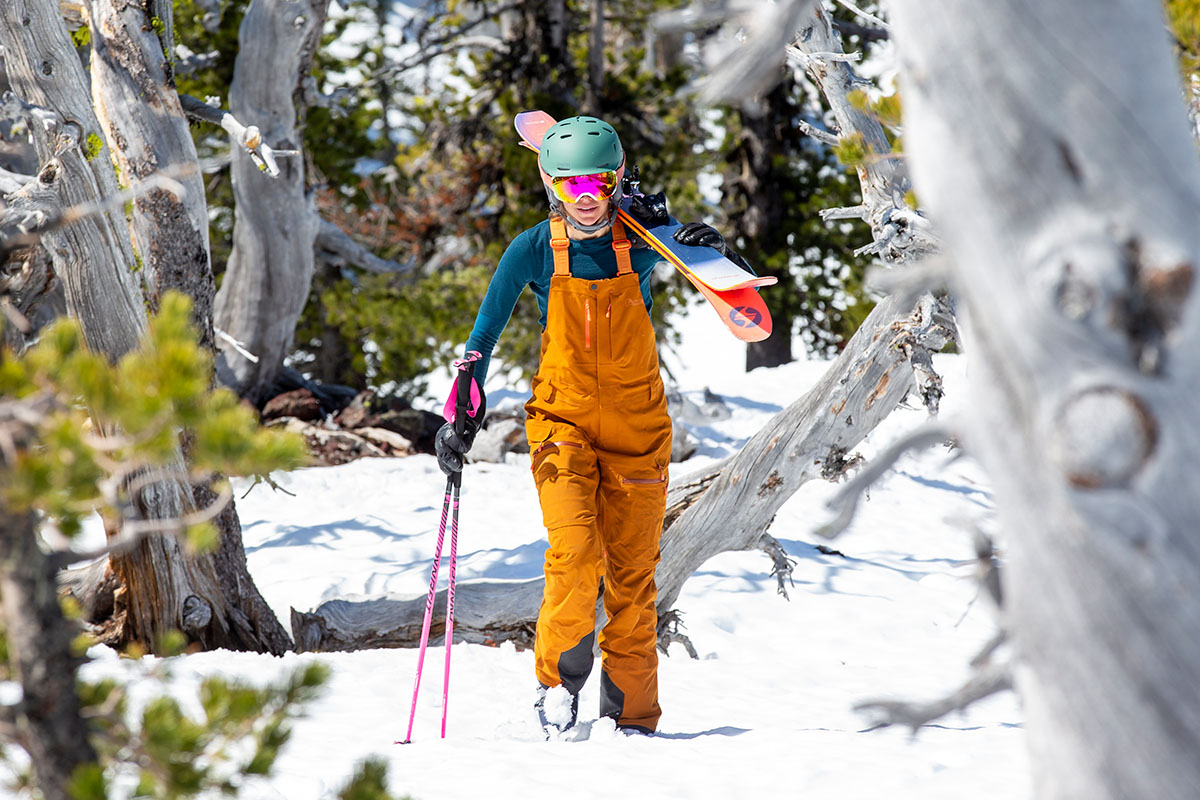
Despite its ability to dump heat effectively, the Smith Nexus MIPS still scores high marks in the warmth department. For reference, last winter was abnormally cold for the Pacific Northwest, with temperatures dipping below 0 degrees Fahrenheit with windchill on several occasions. In these conditions, the Nexus’ thick ear padding and plush interior proved highly effective at keeping me cozy, and with the vents closed I wasn’t able to feel any cold gusts. I did often wear a light- or midweight beanie underneath the helmet for added insulation and protection on resort days, but that’s more personal preference than a knock on the Nexus’ warmth.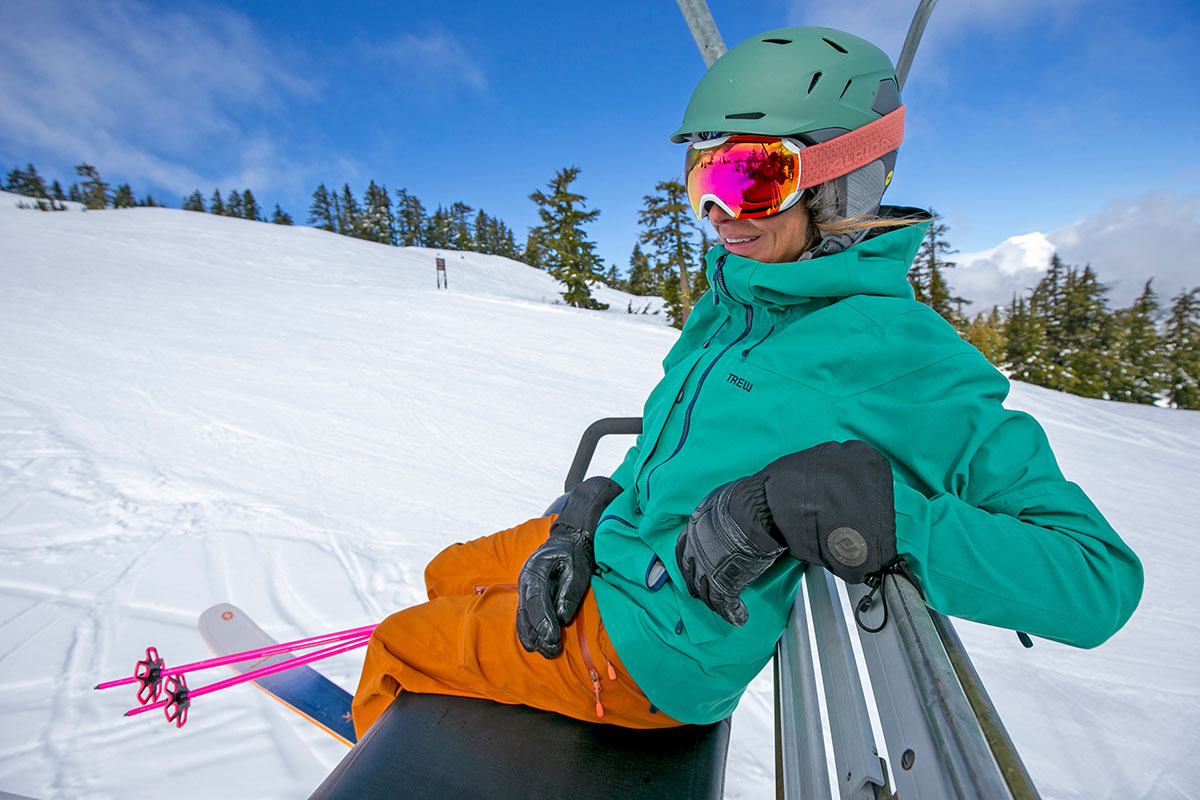
MIPS stands for Multi-directional Impact Protection System and is a liner integrated into many modern ski helmets, including the Nexus (some brands use their own proprietary technology, but the idea is the same). In short, MIPS is designed to reduce potential trauma in the event of an angled impact by moving independently from the outer shell. It’s hard to verify the safety claims, but thankfully the liner doesn’t have an impact on overall comfort. We’ve found that some MIPS-equipped models have a slight reduction in size as a result, but the difference is very minimal, and I don’t have any complaints about the Nexus from a fit perspective (more in “Fit and Sizing” below).
Smith also incorporated their distinctive Koroyd material into the Nexus’ build for added safety. The premise is fairly simple: The honeycomb-like Koroyd (which you can see clearly through the helmet’s vents) is designed to both increase airflow and absorb impact in the event of a crash. We’ve tested the technology in a range of models, including Smith’s Vantage, Level, and Altus MIPS helmets, and found it to be low-profile and nicely integrated into the build. And it’s worth noting that unlike these aforementioned models, the Koroyd coverage extends throughout the full shell of the Nexus, which adds extra assurance. We haven’t experienced any major impacts that would truly test the design, but we appreciate that Smith places such a big emphasis on safety.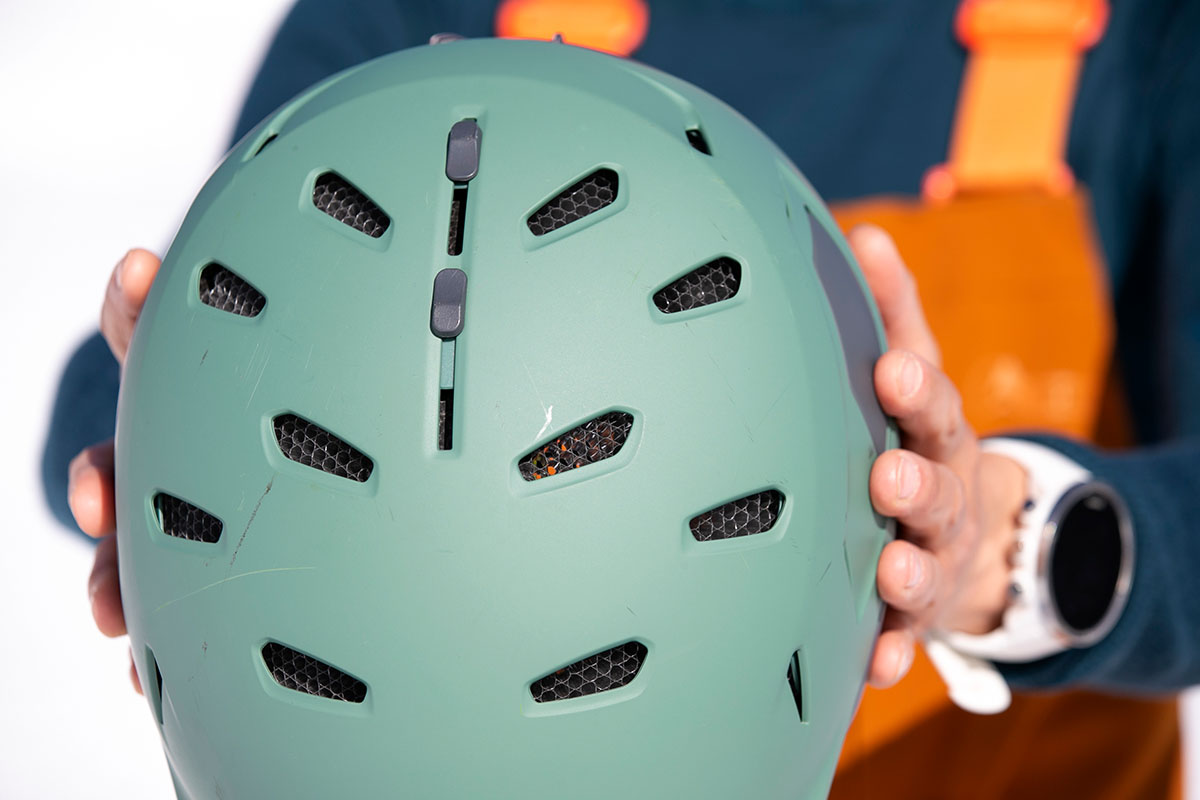
Smith’s Nexus MIPS boasts a Boa dial at the back for adjusting fit, which I’ve found to be exceptionally easy to loosen and tighten, even with gloves on. In short, this is our favorite system on the market and one of the most intuitive: It uses a full, 360-degree halo design that can be adjusted both forward and laterally, snugs evenly around your head, and stays securely in place even during rough and rowdy riding (there’s an audible and satisfying click at each increment). It’s worth noting that this tensioning system is only found on Smith’s higher-end offerings, including the Vantage MIPS, while their mid-range Level and Altus lids use a less customizable VaporFit design (which toggles 270 degrees and foregoes adjustment along the front of the forehead). The differences between the two systems are pretty minimal, but Boa is a leader in both quality and ease of use.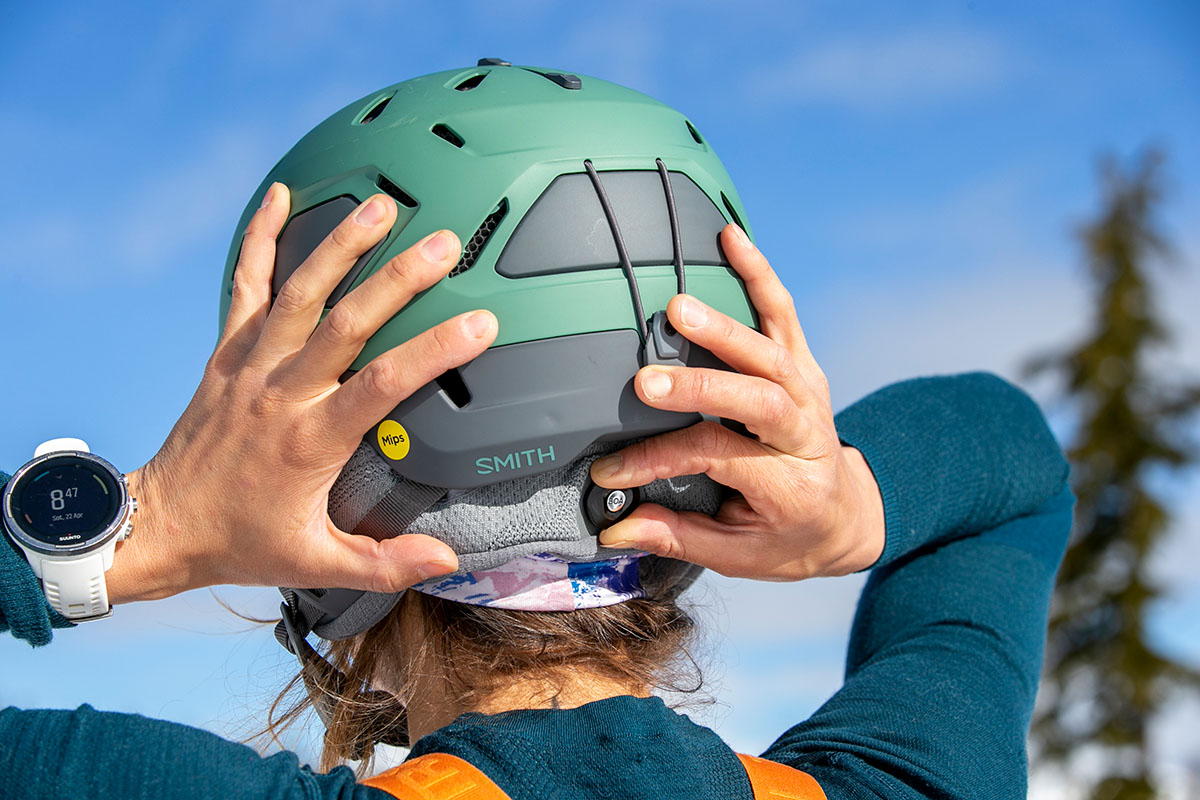
The Nexus’ chinstrap features a magnetic Fidlock buckle, which makes the on and off process a breeze. It’s as easy as positioning the sides near each other until the magnet pulls them together—there’s an audible click when they’re securely attached. To release, simply slide the two pieces in opposite directions until they disconnect. Overall, it’s a very intuitive design that’s easy to operate with one hand, even when wearing thick ski gloves or mittens. And importantly, I haven’t had any issues with the strap coming undone throughout testing.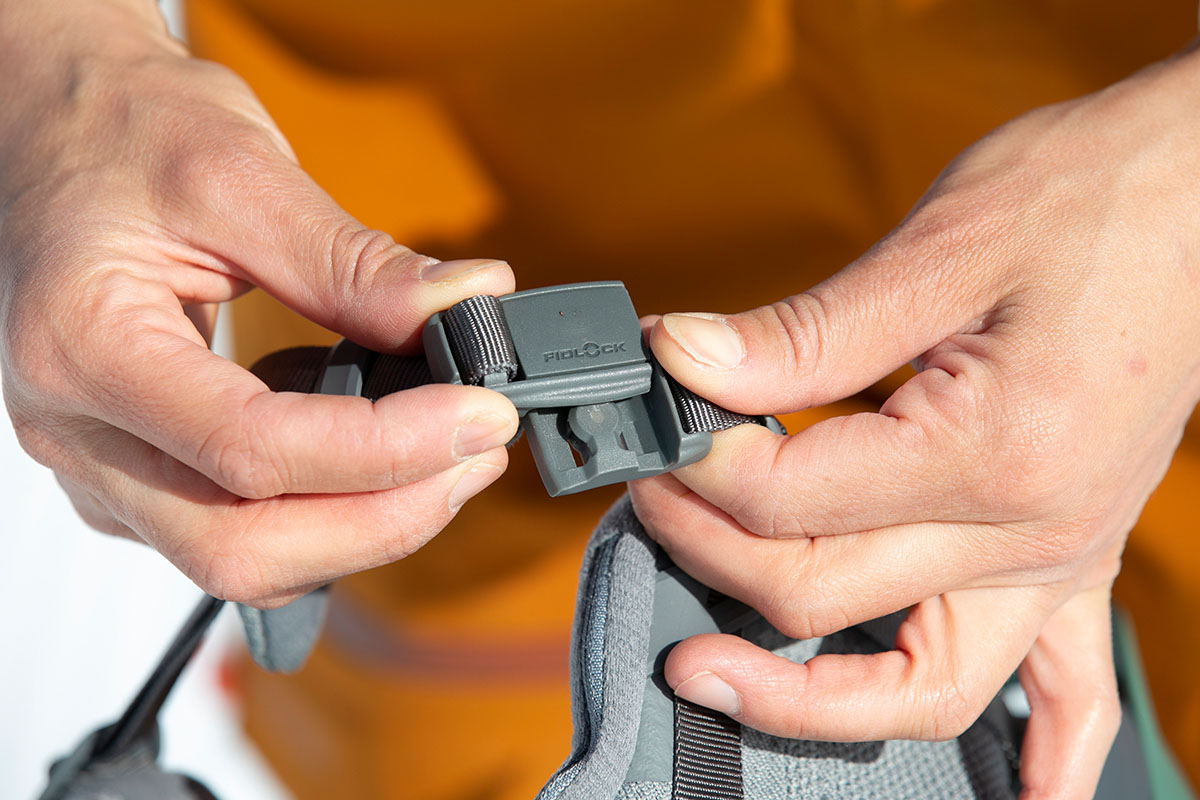
Put simply, the Nexus MIPS helmet embodies the top-notch build quality we’ve come to expect from Smith. Starting with construction, you get a hybrid in-mold design that includes a panel of tougher ABS plastic along the top and back for added protection and a lighter-weight (but less durable) in-mold section at the base of the lid. After a full season of use, my helmet only shows minor cosmetic wear in the form of a few small scratches on the top, which were likely a result of the lid rolling around in the back of my car. Further, all buckles, sliders, vents, and straps are in perfect working order with no failures to date, and the padding on the interior hasn’t packed out or lost any of its insulating abilities.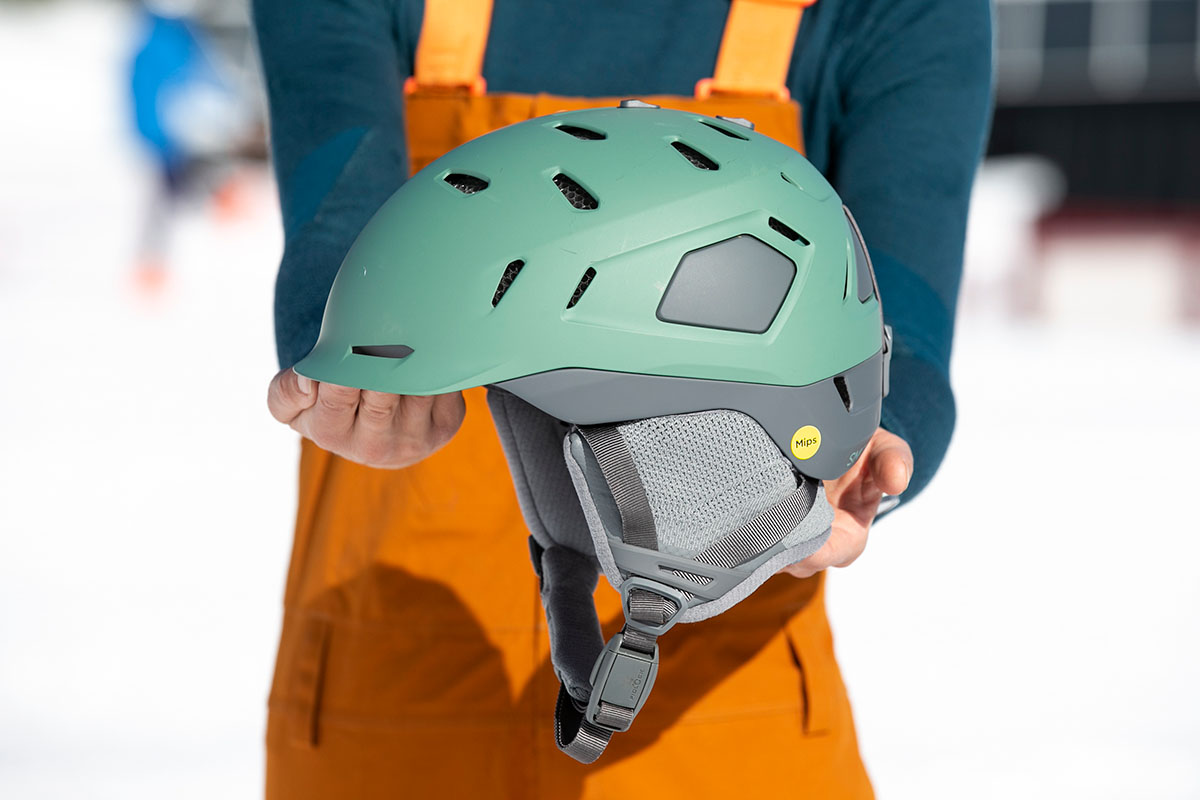
My only real durability-related complaint has to do with the ear pads. The first issue was with security: The pads frequently popped loose when I tugged lightly on them to get the helmet positioned on my head before tightening the Boa dial. This didn’t happen every time, but clicking them back into place became tedious quickly. At the end of the season, I noticed that the mesh on the inside of one pad had accumulated a couple of perforations, and the internal foam padding also has a small tear. This hasn’t affected the Nexus’ warmth or overall performance, but I do expect the ear pads to continue deteriorating over time.
The Nexus clocked in at 1 pound 4 ounces on my scale for a size medium (it’s listed at 1 lb. 3 oz.), which is a little heavy for frequent backcountry use. For reference, Smith’s own $55-cheaper Vantage MIPS weighs a little less at 1 pound 2 ounces, as does POC’s Obex BC MIPS (1 lb. 1.6 oz.). For big-mountain riders and those who like to push their limits, Sweet Protection’s Grimnir 2Vi MIPS (1 lb. 6.2 oz.) is one of the few backcountry-focused lids to outweigh the Nexus, although you do get an upgraded carbon fiber construction. And if you’re truly focused on shaving weight, you can go much lighter with a dedicated touring design like the Salomon Mtn Lab (14.1 oz.) or Petzl Meteor (7.9 oz. in a size S/M), the latter of which is my go-to for skimo racing and ski mountaineering. Importantly, I never felt the Nexus was particularly hefty or bulky on my head—it went unnoticed most of the time—but it certainly isn’t a standout in the weight department and won’t fit inside most smaller (under 30L) ski packs.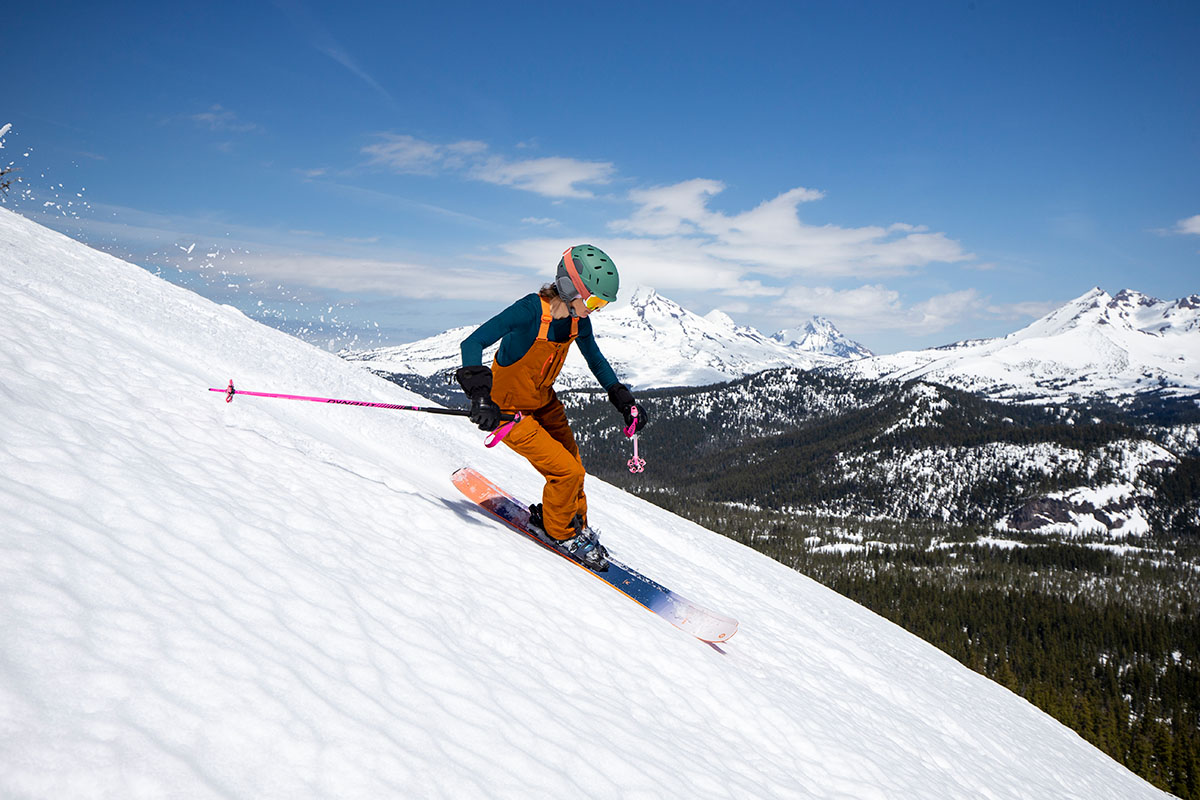
My head measures about 55 centimeters around, so I opted for a size medium in the Smith Nexus MIPS, which has a 55- to 59-centimeter adjustment range. Although I’m at the low end of that spectrum, I wanted the ability to add a thin beanie underneath, and the medium allowed me to do that without feeling overly big when worn on its own. I do have to cinch the Boa dial as tightly as possible when I forgo a beanie, but the lid feels snug and secure with no unwanted movement. And a final note: The Nexus is available in four sizes (from small to extra-large) that can accommodate heads from 51 to 67 centimeters in diameter, along with a Round Contour Fit variation for those with rounder head shapes (more on that model below).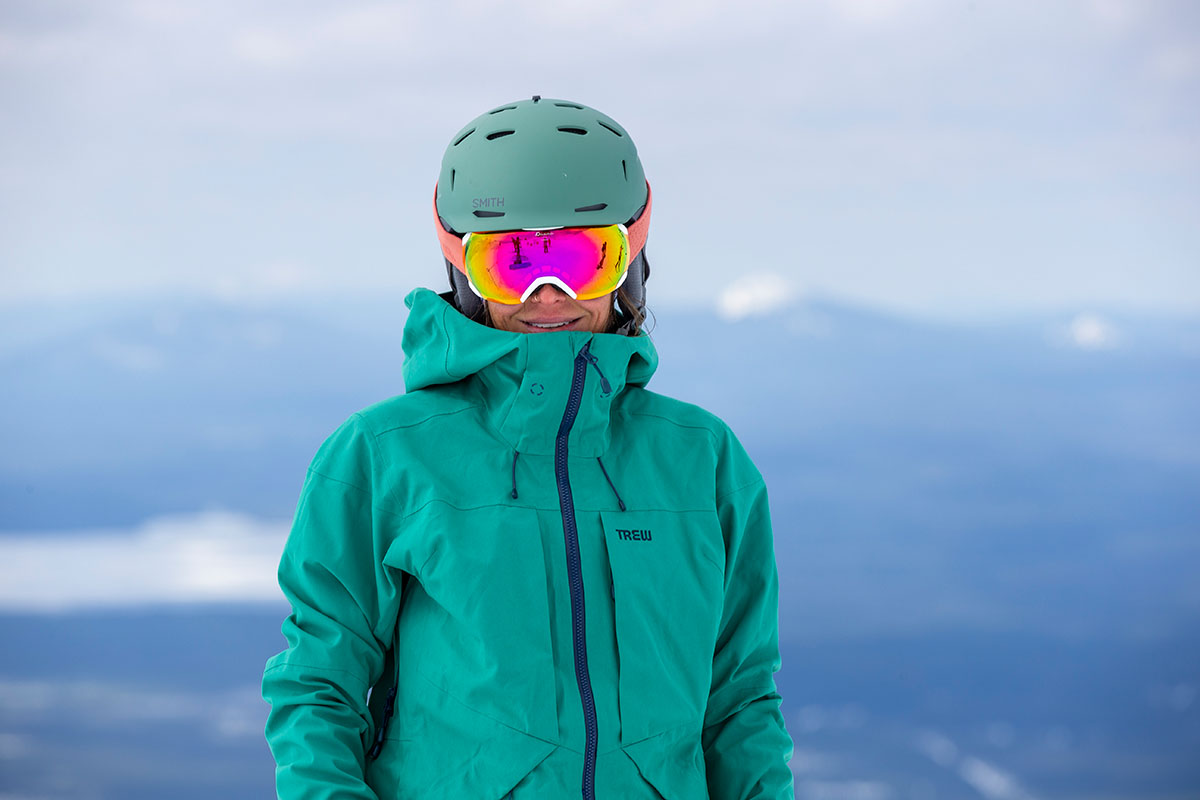
I tested the standard Nexus MIPS helmet for this review, and Smith also offers the lid in a Round Contour Fit variation for the same price. Comparing the two, the latter has more width at the rear and a shorter length to accommodate rounder head shapes, and it’s available in three sizes—small, medium, and large—compared to the standard model’s four sizing options. The rest of the build and feature set are identical, including a highly adjustable Boa fit system, removable ear pads, a Fidlock chinstrap buckle, complete Koroyd coverage, a MIPS liner, and a hybrid in-mold construction.
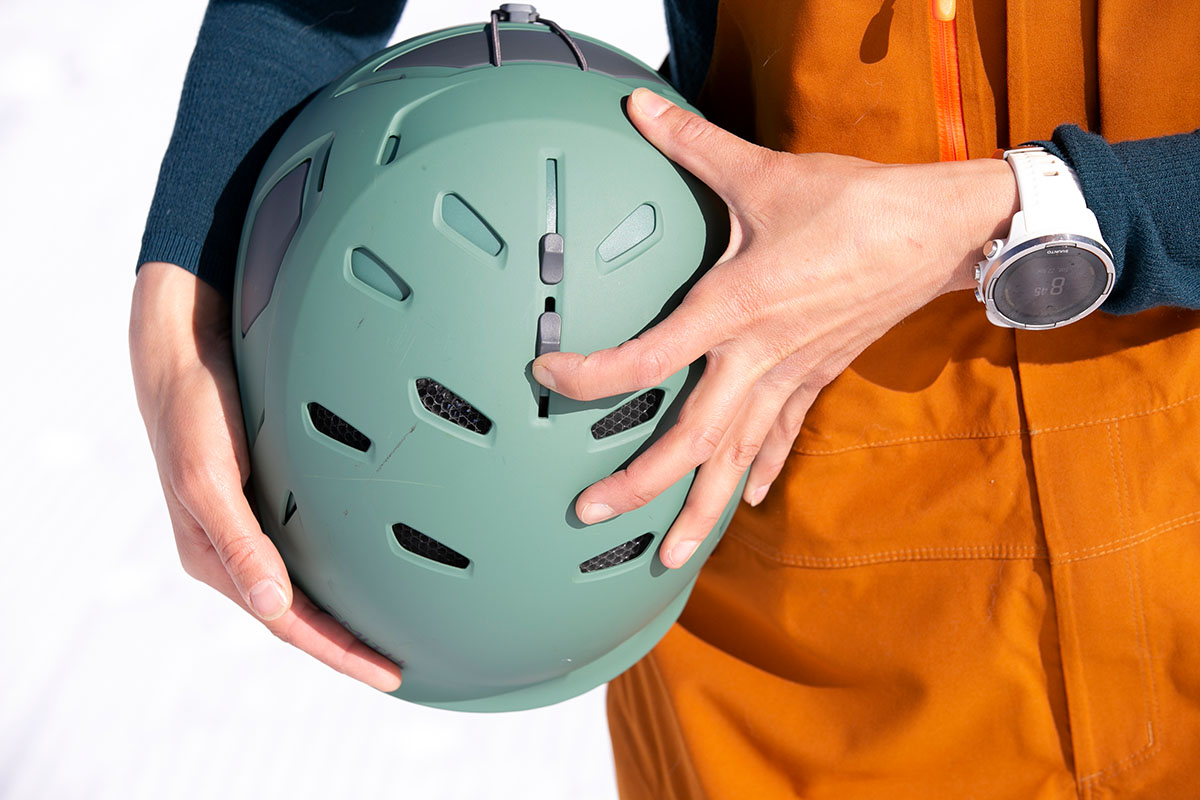
| Helmet | Price | Construction | Weight | Ventilation | MIPS |
|---|---|---|---|---|---|
| Smith Nexus MIPS | $325 | Hybrid in-mold | 1 lb. 3 oz. | Adjustable (24 vents) | Yes |
| Smith Vantage MIPS | $270 | Hybrid in-mold | 1 lb. 2 oz. | Adjustable (21 vents) | Yes |
| Oakley Mod5 MIPS | $260 | Hybrid in-mold | 1 lb. 8 oz. | Adjustable (11 vents) | Yes |
| Anon Merak WaveCel | $320 | Hybrid in-mold | 1 lb. 4.5 oz. | Adjustable (19 vents) | Yes (WaveCel) |
| Salomon Mtn Lab | $200 | In-mold | 14.1 oz. | Fixed (12 vents) | No |
| Sweet Protection Grimnir 2Vi | $400 | Hybrid carbon shell | 1 lb. 6.2 oz. | Adjustable (10 vents) | Yes |
Smith’s Nexus MIPS is a premium ski helmet that doesn’t skimp on features or performance. From within Smith’s own lineup, the Vantage MIPS is a step down in price at $270 but retains many of the same qualities, including a MIPS liner and Koroyd technology, Boa adjustment dial, hybrid in-mold construction, and excellent ventilation with 21 vents and dual temperature control sliders. In parsing out the differences, the Nexus features Koroyd around the full shell (the Vantage only has it at the top), and we also prefer the easier-to-use magnetic Fidlock design on the Nexus (the Vantage sports a standard buckle). That said, the Vantage’s slight weight advantage (by 1 oz.) and $55-cheaper price tag give it the overall edge for us. If you’re after the full package and willing to pay the premium, however, go with the Nexus.
Another fully featured design to consider is Oakley’s Mod5 MIPS. Like the Nexus, the Mod5 is a premium design with features like a magnetic chinstrap, Boa dial, and MIPS liner for impact protection. Oakley also incorporated their Skull Matrix design, which merges the Boa system and MIPS liner into one for a snug and close-fitting feel throughout, and we love the Polartec Power Grid liner that’s comfortable and does a good job wicking moisture. The rest of the design falls short of the Smith, however: The Mod5 is heavier (1 lb. 8 oz. on our scale), less breathable with just 11 vents, and low on padding compared to the Nexus. We also miss the prior generation’s swappable brim, which made it compatible with a wider range of goggle sizes (for more, see our in-depth Mod5 review). The Smith will cost you $65 more than the Oakley, but we think most dedicated skiers will find the bump in performance worth that price penalty.
Anon is another big name in the snow sports world, and their Nexus equivalent is the Merak WaveCel. The big news with the Anon is its namesake WaveCel technology, which is a cell-like structure—similar to Smith’s Koroyd—intended to boost shock absorption in direct impacts and reduce rotational forces in an angled hit. Like the Nexus, the Merak also boasts high-end features like a hybrid in-mold construction for good durability, a magnetic chinstrap, a Boa fit system, and an adjustable ventilation design. However, the Anon is a little heavier than the Smith—our size medium tipped the scales at 1 pound 4.5 ounces—and the minimalist padding is a noticeable step down in comfort and warmth from the Nexus’ well-cushioned interior. For $5 more, the Smith has a more premium and less compromised feel.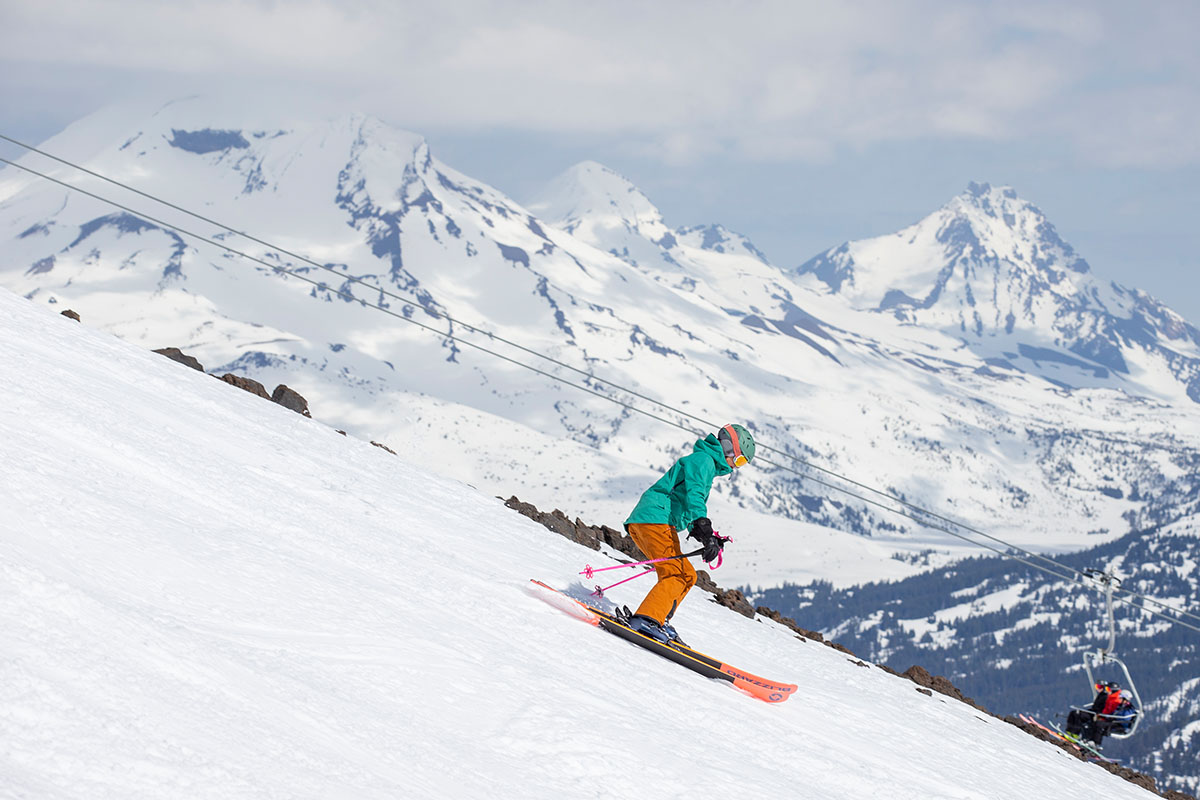
For those who stick strictly to the backcountry, a dedicated touring lid like Salomon’s Mtn Lab makes a lot of sense. First and foremost, weight drops down to a feathery 14.1 ounces (a fairly significant 4.9 oz. less than the Smith), which makes it easy to wear all day or stow in a pack on the way up. Ventilation is also good with large cutouts along the top and sides, although the vents are non-adjustable, which makes it less ideal for lift-assisted days. And finally, you make some notable compromises with the highly focused design, particularly when it comes to comfort—the Nexus is noticeably more padded and plusher—and warmth. A choice between the two will come down to priorities: For those headed into the alpine, the Salomon is a very capable choice for a considerable $125 less; for mixed front- and backcountry use, the Nexus is much more well rounded.
A final helmet to consider is one of the few on the market to cost more than the Nexus: the $400 Sweet Protection Grimnir 2Vi MIPS. What brings the cost so high is the Grimnir’s unique carbon build that’s super tough but doesn't provide many other noteworthy benefits. Weight also goes up to 1 pound 6.2 ounces, and the Grimnir only boasts 10 vents compared to the Nexus’ 24, which translates to a sizable step down in breathability. The rest of the build is undeniably premium with a MIPS liner, quality construction, and good padding, but we keep coming back to value: Other than the carbon build, the Sweet Protection doesn’t offer any notable boost in performance, and the majority of riders will be better off saving $75 with the Nexus.
If you’re thinking about buying gear that we’ve reviewed on Switchback Travel, you can help support us in the process. Just click on any of the seller links above, and if you make a purchase, we receive a small percentage of the transaction. The cost of the product is the same to you but this helps us continue to test and write about outdoor gear. Thanks and we appreciate your support!
Depending on the seller, most products ship free in the United States on orders of $50 or more. International shipping availability and rates vary by seller. The pricing information on this page is updated hourly but we are not responsible for inaccuracies.